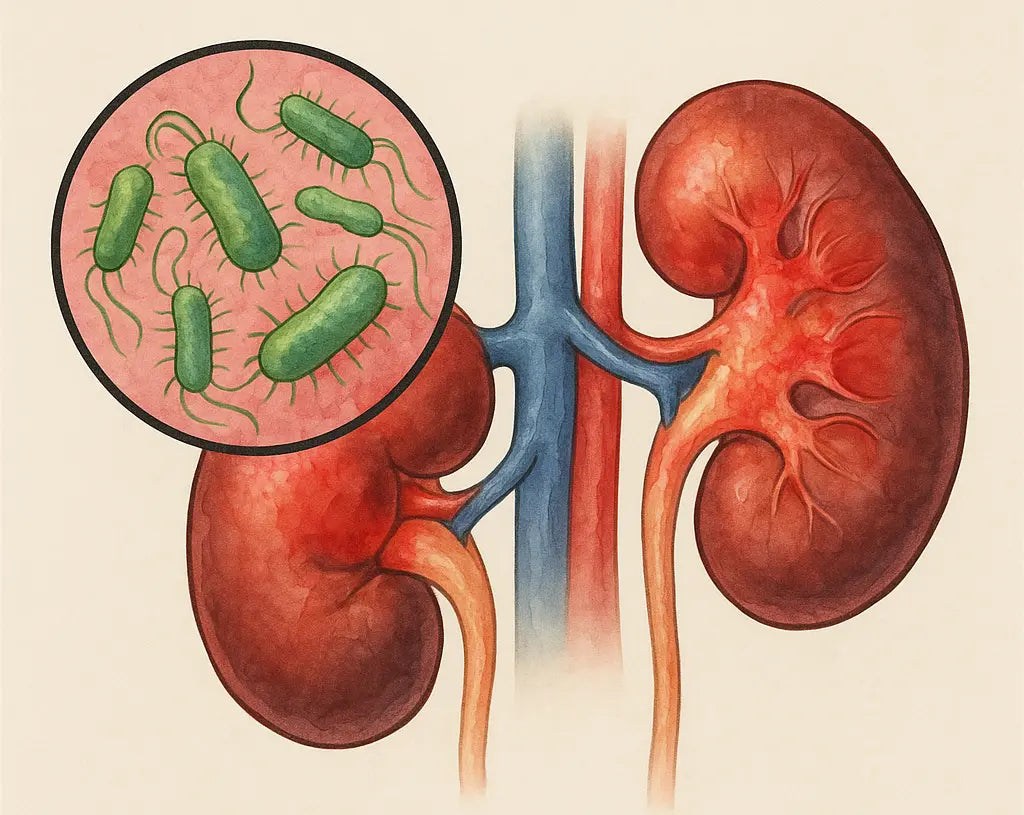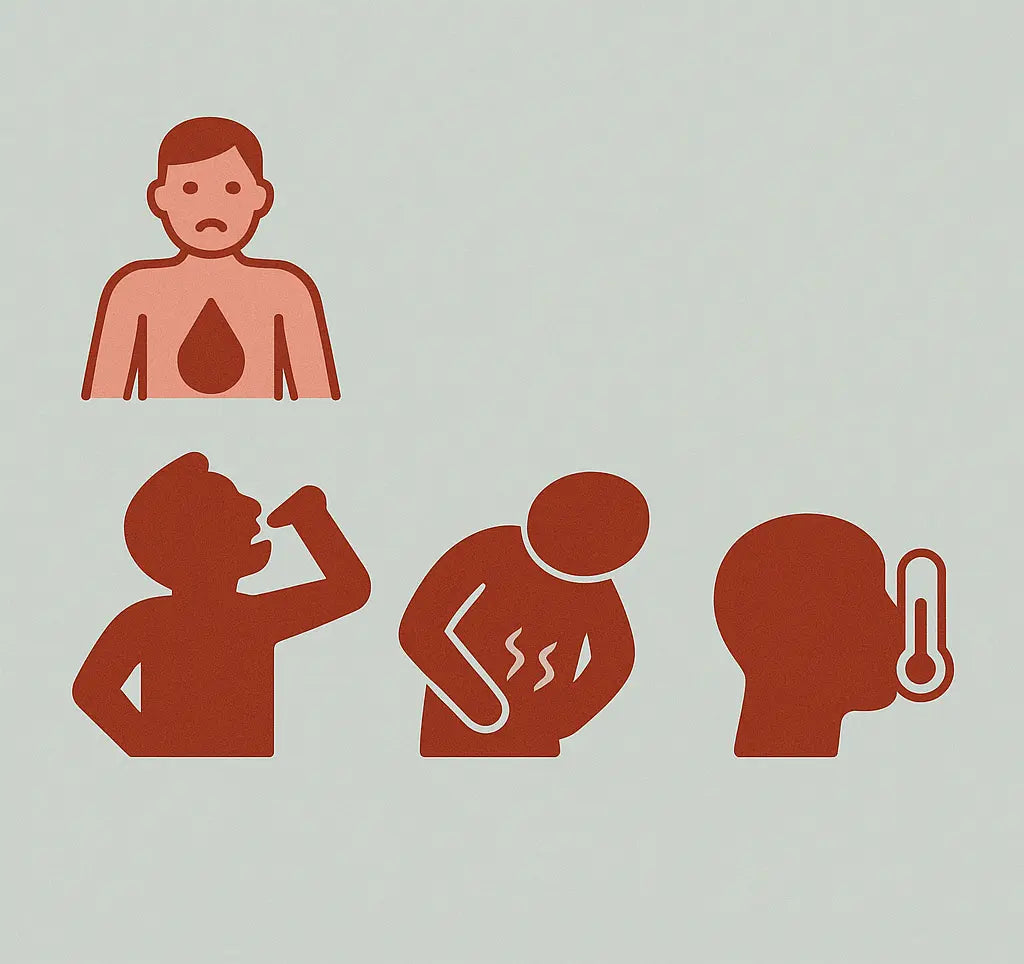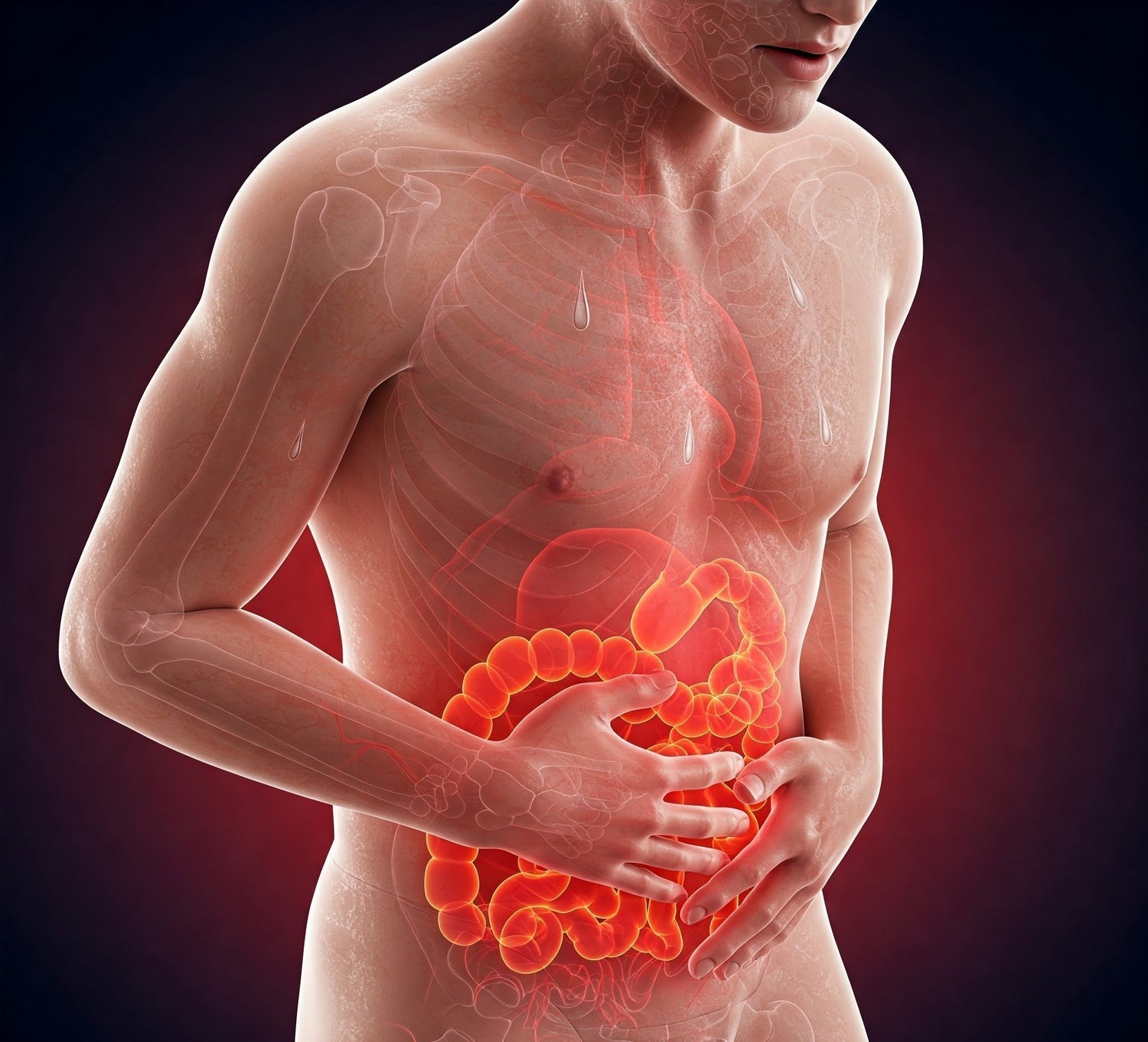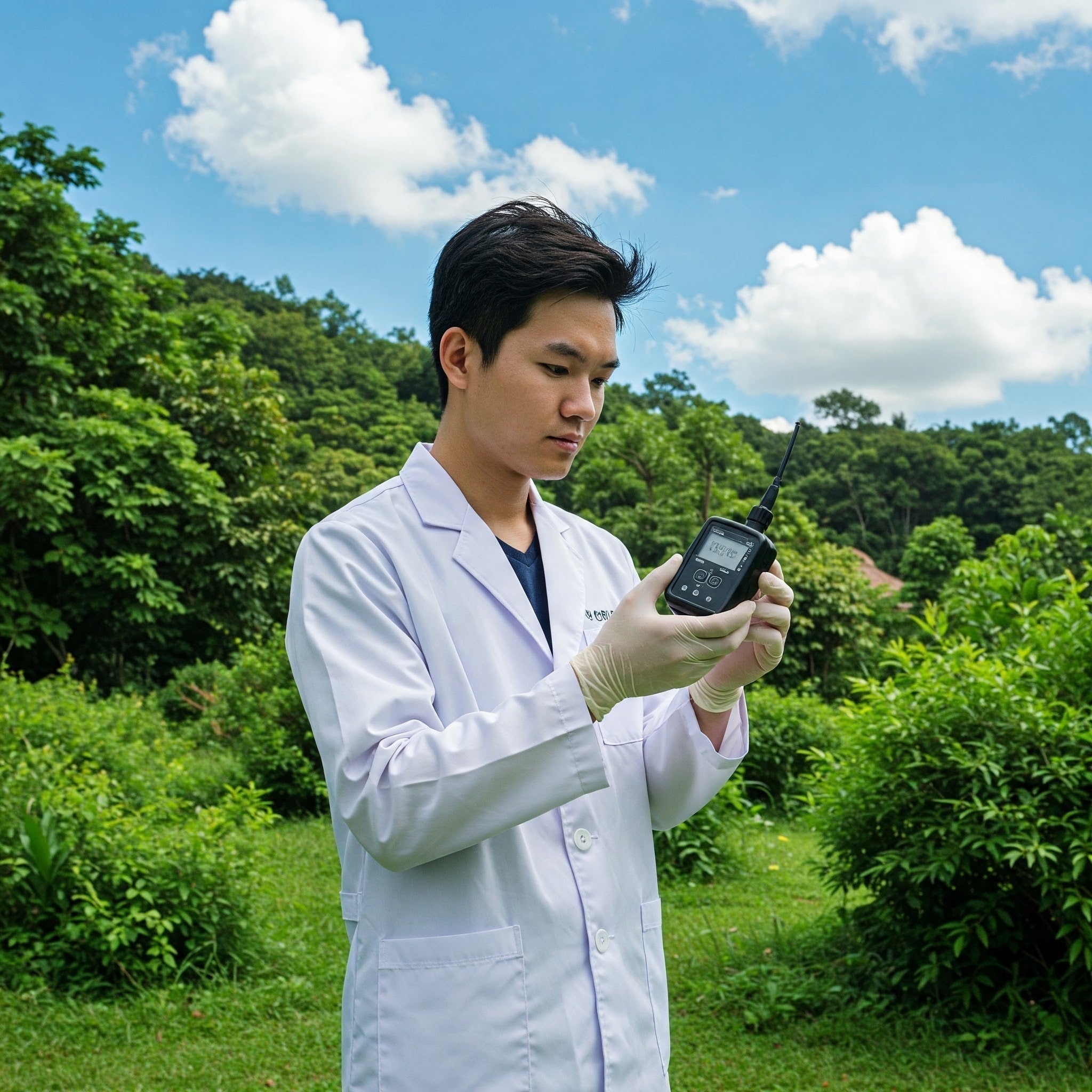If you’re wondering how long does Escherichia coli last and when individuals typically develop symptoms, the duration varies based on several factors. Symptoms typically appear 1 to 10 days after exposure and can last from 5 to 10 days. In this article, we will discuss the duration of E. coli symptoms, the factors influencing recovery, and when to seek medical attention.
Key Takeaways
-
E. coli infections can last from 5 to 10 days, with symptoms appearing 1 to 10 days post-exposure, varying based on strain and individual health.
-
Severe E. coli infections can lead to serious complications such as hemolytic uremic syndrome (HUS), particularly in vulnerable populations like young children and the elderly.
-
Preventive measures, including proper food handling and hygiene practices, are essential in reducing the risk of E. coli infections.
Understanding Escherichia coli (E. coli)

Escherichia coli, or E. coli, is a diverse group of bacteria that normally resides in the intestines of healthy people and animals. These bacteria play a crucial role in helping to digest food and produce vitamins. While many strains of E. coli are harmless and even beneficial for digestive health, some coli bacteria can cause serious illness. Recognizing and mitigating the risks associated with E. coli infections requires understanding the different strains and their potential impacts.
One of the most notorious strains is E. coli O157:H7, which can lead to severe abdominal cramps and stomach pain, as well as bloody diarrhea. This strain is often linked to outbreaks resulting from eating contaminated food, such as undercooked ground beef or unpasteurized milk. However, E. coli isn’t just a foodborne threat; it can also spread through person-to-person contact and contaminated surfaces. Certain strains of E. coli can release toxins, leading to a range of symptoms from mild to life-threatening. The coli outbreak associated with this strain highlights the importance of food safety.
Interestingly, even individuals who do not show symptoms can spread E. coli, making it a hidden danger in communal settings. It underscores the need for stringent food safety and public health measures to control and prevent E. coli outbreaks. Understanding E. coli’s role in our health, from the food we eat to the water we drink, is key to preventing its harmful effects.
Causes of Infection
E. coli infections are caused by the Escherichia coli (E. coli) bacteria, which can be found in contaminated food, water, and surfaces. These bacteria can produce a powerful toxin that leads to severe illness, including bloody diarrhea, stomach cramps, and even kidney failure. Eating contaminated food, such as undercooked ground beef, unpasteurized milk, and raw vegetables, is a common way to contract an E. coli infection. Additionally, person-to-person contact, touching contaminated surfaces, and drinking contaminated water can also spread the infection. It’s crucial to be aware of these sources to prevent the onset of a coli infection.
Risk Factors
Certain groups of people are more susceptible to E. coli infections, including young children, older adults, and individuals with compromised immune systems. International travelers, especially those visiting developing countries, are also at a higher risk of developing an E. coli infection. Furthermore, people who handle raw meat, raw fruits, and raw vegetables, such as farmers and food handlers, are at a higher risk of infection. To reduce the risk of infection, it is essential to take precautions such as washing hands frequently, cooking food properly, and avoiding cross-contamination.
Transmission
E. coli bacteria can be transmitted through various routes, including contaminated food and water, person-to-person contact, and touching contaminated surfaces. The bacteria can survive on surfaces for hours to months, making it essential to practice good hygiene, such as washing hands regularly and wiping down surfaces with soap and warm water. Additionally, E. coli can be spread through contaminated food, such as undercooked meat, unpasteurized dairy products, and raw sprouts. It is crucial to handle and prepare food safely to prevent the spread of infection.
Sources of Infection
E. coli infections can come from various sources, including contaminated food, water, and surfaces. Undercooked ground beef, unpasteurized milk, and raw vegetables are common sources of E. coli infection. Additionally, contaminated water, such as swimming pools, lakes, and rivers, can also spread the infection. Farm animals, such as cattle and pigs, can carry E. coli bacteria, and people can become infected through contact with these animals or their feces. It is essential to take precautions, such as washing hands frequently and cooking food properly, to reduce the risk of infection from these sources.
Duration of E. coli Symptoms

Symptoms associated with E. coli infections usually emerge between 1 and 10 days after coming into contact with the bacteria, but for common types like E. coli O157, signs often appear within a span of 2 to 5 days from exposure. The length these symptoms persist can differ. They typically subside after about 5 to 10 days and may include watery diarrhea, stomach cramps, as well as abdominal pain.
In general cases involving healthy adults, recovery from an E. coli infection is expected within a matter of weeks, although this time frame can fluctuate based on both the particular strain involved and the affected individual’s overall health condition. While most individuals recover within a few weeks, some may experience longer-lasting effects. While mild instances might alleviate spontaneously without medical intervention, more serious conditions could linger and necessitate professional healthcare support—especially if diarrhea lasts beyond three consecutive days.
Diagnosing an E.coli infection may be complicated due to its symptom overlap with other ailments caused by ingesting contaminated food or water such as traveler’s diarrhea which displays many compatible clinical features with those found in an E.coli episode. Hence it becomes crucial to distinguish specific indicators accurately while also considering typical symptom duration that will guide timely access to suitable treatment measures.
Factors Influencing Recovery Time
The recovery period from an E. coli infection can be affected by various elements, such as the individual’s age, general health status, and the efficacy of their immune response. Both young children and elderly people tend to have weaker immune systems. Thus they are at increased risk for serious complications and often endure extended periods of convalescence.
Maintaining proper hydration and a nutritious diet plays a critical role in accelerating recovery from an E. coli infection. Sufficient fluid intake is essential for eliminating toxins from the body, while adequate nutrition bolsters immunity and aids in repairing bodily tissues.
A person’s ability to recover quickly from an E. coli infection largely hinges on how powerful their immune response is. Those with robust immunities can fight off the pathogen more vigorously, shortening sickness duration considerably. In contrast, individuals whose immune defenses are impaired may suffer longer-lasting bouts of illness that could also be more intense in nature.
Complications from E. coli Infections

Numerous E. coli infections may subside without significant complications. Some can escalate into grave health issues. Hemolytic uremic syndrome (HUS) is one of the most critical conditions associated with infections caused by Shiga toxin-producing E. coli (STEC). HUS has the potential to inflict severe kidney damage and possibly result in a life-threatening form of kidney failure.
Individuals most susceptible to HUS include both children under five years old and elderly adults, although it holds the potential to impact individuals across all age groups. The common indicators of HUS consist of reduced urine output, unexpected bruising or bleeding, along with fatigue — often following initial diarrheal symptoms coupled with other manifestations. Prompt medical attention is vital for managing this condition effectively and averting mortality rates that stand at 5-10% among those affected.
Dire consequences stemming from serious E.coli infection episodes might entail persistent health concerns like chronic kidney disease, particularly affecting young patients already coping with pre-existing medical conditions. It’s imperative that signs indicating possible complications are swiftly recognized so as to prevent any progression towards more threatening illnesses thereby allowing for immediate healthcare responses.
When to Seek Medical Attention

It is crucial to seek prompt medical care when exhibiting symptoms of E. coli, as timely treatment can greatly influence the prognosis. The presence of persistent or severe bloody diarrhea warrants immediate medical evaluation. Should additional symptoms arise such as high fever exceeding 102°F, intense abdominal cramps, or vomiting that impedes fluid intake, contacting a healthcare provider without delay becomes essential.
If you experience a burning sensation during urination along with other symptoms, it is important to seek medical attention.
For those affected by E. coli infections, dehydration poses a significant risk and is particularly perilous for vulnerable populations like children and seniors. Symptoms indicative of dehydration include experiencing a dry mouth sensation, feeling dizzy and having reduced urine frequency – these are signals that one should swiftly seek medical assistance. In cases where dehydration intensifies, it may necessitate the administration of intravenous fluids to rehydrate the body effectively.
Extra caution is advised for parents with infants. In instances where children under 12 months display indications of an E.coli infection, immediate communication with a health professional is imperative. Swift action contributes to averting more serious complications and assists in accelerating recovery time for young patients.
Diagnosing E. coli Infections
The primary method for diagnosing infections caused by E. coli is through the examination and testing of a stool sample to identify the presence of the bacteria. Analyzing these samples in a laboratory determines which strain of E. coli is present, enabling precise diagnosis and treatment strategies.
Symptoms such as foul smelling pee can also indicate a urinary tract infection caused by E. coli.
Understanding that consumption of contaminated food or water could have resulted in an infection with E. coli provides critical insight to medical professionals aiding in quick detection and appropriate intervention. Awareness of signs such as urine with an unpleasant odor or continuous diarrhea can act as indicators prompting individuals to seek prompt medical attention, ensuring effective management of conditions related to the urinary tract associated with disease control efforts.
Treatment and Home Care for E. coli
For E. coli O157 infections, staying hydrated is crucial to prevent dehydration. Drink plenty of clear fluids like hot water, warm water, broth, and iv fluids can reduce fatigue and aid recovery. Rest is also essential to allow your body to combat the infection.
In addition to diarrhea, other symptoms such as stomach cramps and vomiting should be managed with rest and hydration.
Antibiotics are not advised for E. coli O157 infections as they may increase the risk of complications. Antibiotic treatment and antidiarrheal medications should also be avoided as they may prolong the infection. Instead, focus on home care practices like drinking fluids, resting, and eating a bland diet. During recovery, avoid spicy foods, dairy products, and high-fiber items.
Most mild E. coli infections resolve without medical treatment. However, if symptoms persist or worsen, it’s crucial to seek medical advice to prevent complications.
Preventing E. coli Infections

Proper food handling and hygiene practices are the first step in preventing E. coli infections from contaminated foods. Using a meat thermometer to ensure meats reach safe cooking temperatures is crucial in preventing E. coli contamination. It’s also recommended to avoid consuming raw dough or batter, which can harbor undercooked meat or E. coli.
Cross-contamination from raw meat is a common source of E. coli infections, so wash hands thoroughly with soap and water before and after handling food to prevent cross contamination. Also, avoid touching contaminated surfaces and swallowing contaminated water from lakes, ponds, or swimming pools to reduce the risk of infection.
When traveling abroad, ensure food and water safety to prevent E. coli outbreaks. Proper sanitation, including using bleach, can reduce the risk of E. coli infections at home. Adopting these preventive measures can significantly minimize the risk of E. coli infection.
The Role of Milerd Detoxer in Food Safety
The Milerd Detoxer represents a significant advancement in ensuring food safety, as it is designed to eradicate dangerous contaminants such as E. coli from edible items. Through the employment of ultrasonic and oxidative cleaning technologies, the device succeeds in purging up to 99% of dangerous toxins that can be found in food, surpassing the capabilities of standard washing techniques.
In contrast to simple rinsing methods that only get rid of residues on the surface, the Milerd Detoxer goes beyond simple rinse methods that only get rid of residues on the surface. By attacking pollutants at their molecular core to heighten levels of food cleanliness. This feature renders it particularly crucial for safeguarding against E. coli infections within homes where vulnerable populations like young children, older adults or those with compromised immune systems reside.

Summary
It is essential to comprehend the intricacies of E. coli infections, including recognizing symptoms, the time frame they may persist, influencing factors on recovery times, and possible complications, to safeguard health effectively. Knowledge in these areas enables individuals to adeptly navigate and thwart E. coli infections.
Utilizing state-of-the-art food safety solutions such as the Milerd Detoxer can diminish contamination risks significantly and promote a healthier way of living. Remain knowledgeable, prioritize safety, and actively engage in protective measures against E. coli infections for your own well-being as well as that of those close to you.



Leave a comment
This site is protected by hCaptcha and the hCaptcha Privacy Policy and Terms of Service apply.